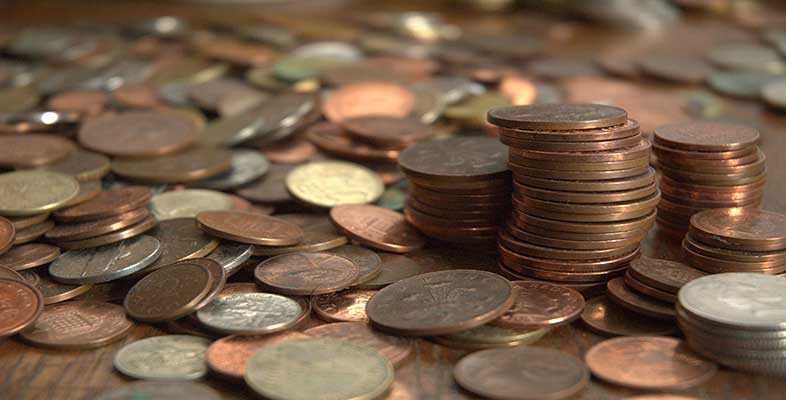1.3 Rounding
For most business and commercial purposes the degree of precision necessary when calculating is quite limited. While engineering can require accuracy to thousandths of a centimetre, for most other purposes tenths will do. When dealing with cash, the minimum legal tender in the UK is one penny, or £00.01, so unless there is a very special reason for doing otherwise, it is sufficient to calculate pounds to the second decimal place only.
However, if we use the calculator to divide £10 by 3, we obtain £3.3333333. Because it is usually only the first two decimal places we are concerned about, we forget the rest and write the result to the nearest penny of £3.33.
This is a typical example of rounding, where we only look at the parts of the calculation significant for the purposes in hand.
Consider the following examples of rounding to two decimal places:
- 1.344 rounds to 1.34
- 2.546 rounds to 2.55
- 3.208 rounds to 3.21
- 4.722 rounds to 4.72
- 5.5555 rounds to 5.56
- 6.9966 rounds to 7.00
- 7.7754 rounds to 7.78
Rule of rounding
If the digit to round is below 5, round down. If the digit to round is 5 or above, round up.
Activity 4
Round the following numbers to two decimal places:
Part (a)
(a) 0.5678
Answer
(a) 0.57
Part (b)
(b) 3.9953
Answer
(b) 4.00
Part (c)
(c) 107.356427
Answer
(c) 107.36
Activity 5
Round the same numbers as above to three decimal places:
Part (a)
(a) 0.5678
Answer
(a) 0.568
Part (b)
(b) 3.9953
Answer
(b) 3.995
Part (c)
(c) 107.356427
Answer
(c) 107.356
